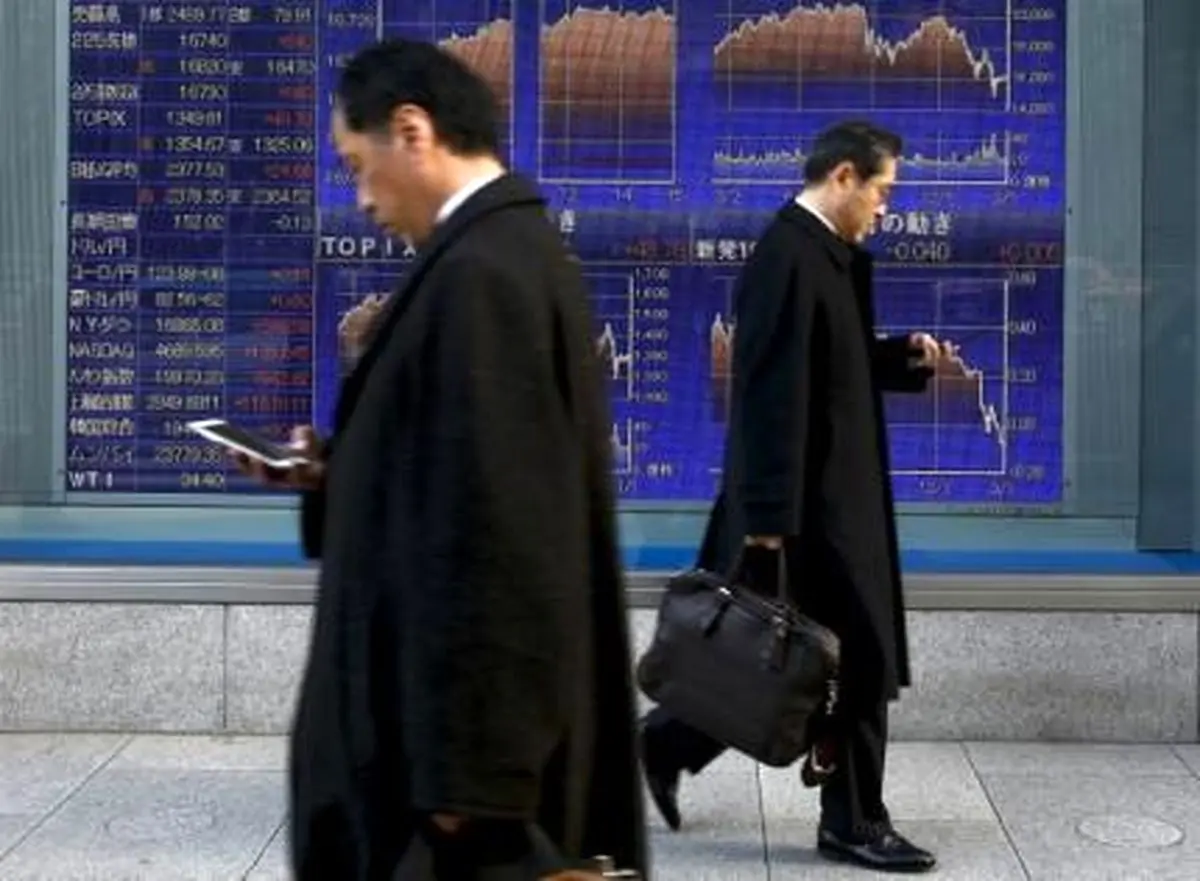Asian shares bounce after losses, dollar sags on weak U.S.

Asian stocks bounced on Monday after three losing sessions, tracking a firmer Wall Street, while the dollar was weighed down by tensions on the Korean peninsula and weak U.S. inflation data which dampened prospects of another Federal Reserve interest rate hike later this year.
Overall reaction was subdued to Monday's Chinese data which were generally weaker than forecast, and reinforced views that the world's second-largest economy is starting to lose a bit of steam as lending costs rise and the property market cools.
MSCI's broadest index of Asia-Pacific shares outside Japan .MIAPJ0000PUS was up 0.7 percent. The index had fallen for three straight days previously, losing a combined 3 percent, on escalating tensions between the United States and North Korea.
Australian stocks rose 0.5 percent and South Korea's KOSPI .KS11 climbed 0.4 percent.
Hong Kong's Hang Seng .HSI was up 0.8 percent and Shanghai .SSEC added 0.2 percent.
China's factory output in July grew 6.4 percent from a year earlier, short of the 7.2 percent forecast, while fixed-asset investment expanded 8.3 percent in the first seven months against expectations for growth of 8.6 percent.
Geopolitical risks were expected to remain a key theme for the global markets in the near term, as North Korea celebrates Liberation Day on Tuesday to mark the end of Japanese rule.
Investors also braced for tensions ahead of Aug. 21, when an annual joint U.S.-South Korean military exercise is due to begin.
"Due to caution towards a further escalation in tensions over North Korea, U.S. yields and equities are expected to decline and the yen is likely keep appreciating this week," said Masafumi Yamamoto, chief forex strategist at Mizuho Securities in Tokyo.
Japan's Nikkei .N225 bucked the trend and fell 1 percent as a stronger yen overshadowed much better-than-expected second quarter economic growth.
The three major U.S. stocks indexes snapped three days of losses and ended higher on Friday, as investors bet on slower U.S. rate hikes following weaker-than-expected consumer price data. But gains were muted by increasingly aggressive exchanges between Washington and Pyongyang. [.N]
U.S. Treasury yields, which already declined on the North Korean concerns, fell further on Friday on the soft U.S. consumer prices data. The benchmark 10-year Treasury yield US10YT=RR touched 2.182 percent on Friday, its lowest since late June, before pulling back a little to 2.204 percent on Monday.
Friday's data showed the U.S. consumer price index edged up just 0.1 percent last month after it was unchanged in June. Economists polled by Reuters had forecast the CPI rising 0.2 percent in July.
The dollar index against a basket of six major currencies was flat at 93.076 .DXY after it slipped about 0.4 percent on Friday.
The greenback traded slightly higher at 109.370 yen JPY= after slipping to 108.720 on Friday, its weakest since April 20.
The yen tends to gain in times of geopolitical tension on expectations that Japanese investors will repatriate assets.
It also showed little reaction to second-quarter gross domestic product data which revealed that the economy expanded for a sixth straight quarter led by private consumption and capital expenditure.
While growth was faster than expected, it is not expected to nudge the Bank of Japan into dismantling its massive stimulus program any time soon, as inflation remains stubbornly weak.
The euro was 0.1 percent higher at $1.1824 EUR=.
Crude oil prices edged down after rising slightly on Friday on lower U.S. crude stocks, instability in major producer Nigeria and strong global demand growth. [O/R]
U.S. crude CLc1 was down 2 cents at $48.80 a barrel and Brent LCOc1 was 7 cents lower at $52.03 a barrel.
Gold hovered near a two-month high, benefiting from the U.S.-North Korean tensions and Friday's weak U.S. inflation data. The dollar's recent weakness was also seen to be helping gold.
Spot gold XAU= was a shade lower at $1,287.51 an ounce after reaching $1,291.86 on Friday, its highest level since June 7.
Other precious metals such as silver XAG= and platinum XPT= were also buoyant.
END
